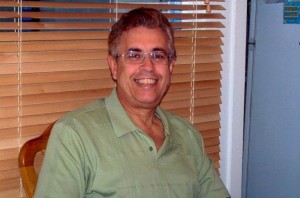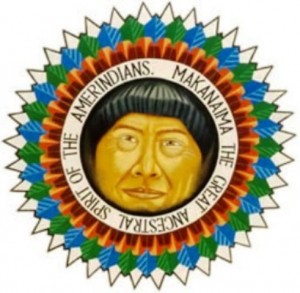Almost four decades ago, Guyanese artist Tony Phillips created “The Builders”, the largest mural ever done in Guyana. The mural can still be seen in the dome of the Guyana Bank for Trade and Industry (formerly Barclays Bank) in Water Street, Georgetown.

“The Builders” mural
In April 1973, Hugh McGregor Reid, the architect who was responsible for the renovation of Barclays Bank, offered Phillips the challenge of painting a mural on the dome of the bank. Reid conceived of having the dome’s surface covered with paintings that would hold viewers interest. The plan was to produce a mural that would celebrate ideas and persons that contributed to the development of the Guyanese nation.
Phillips accepted the challenge and immediately realized that scope of the work and the time-line were too much for one artist, so he immediately enlisted the assistance of his colleague Stanley Greaves.
The project was the largest of its kind to have ever been done in Guyana. It was also a sensitive one. There was the issue of navigating the sensitive matter of racial representation in a multicultural, multiracial, post-colonial society. Historians such as Bobby Moore and Vere T. Daly provided guidance with that part of the project.
“The Builders” mural depicts eight personalities who made seminal contributions to the development of the Guyanese society. According to Phillips, he and Greaves recognized that other personalities could have been represented; however, the final eight reflected the cultural and ethnic diversity that enriched Guyanese society. All the stakeholders were pleased with the choices.




